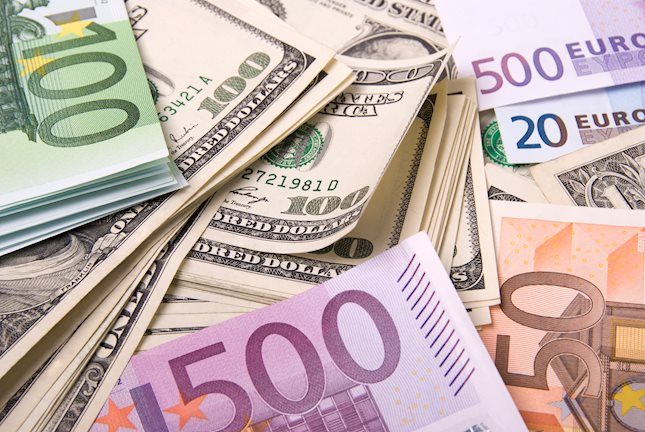- Pound Sterling recaptures weekly highs as the appeal for risk-perceived assets improves.
- BoE Dhingra’s comments on the interest rate outlook were dovish due to the poor UK economic outlook.
- The preliminary S&P Global/CIPS PMI data remains mixed.
The Pound Sterling (GBP) comes under pressure in Thursday’s early New York session due to Middle East tensions and mixed preliminary PMIs reported by the S&P Global/CIPS for February. The Manufacturing PMI at 47.1 was slightly above the prior reading of 47.0 but failed to match expectations of 47.5. The Services PMI was surprisingly unchanged at 54.3, while investors anticipated a decline to 54.1. The Composite PMI was higher at 53.3 against expectations and the former reading of 52.9.
The GBP/USD pair falls on backfoot as Bank of England (BoE) policymaker Swati Dhingra cautioned about downside risks to the United Kingdom economy due to high interest rates. In her speech at the Market News International Connect event on Wednesday, Dhingra said the demand prospects are “weak and less resilient” than their previous forecasts. She added that higher mortgage costs and rental prices in 2023 shortened households’ pockets, which resulted in weak Retail Sales.
The Pound Sterling faces foreign outflows when a BoE policymaker warns about holding interest rates higher for a longer duration because it increases the possibility of interest rate cuts.
Meanwhile, investors await February’s preliminary S&P Global PMI data for the United States, which will provide more insights into the economic outlook.
Daily digest market movers: Pound Sterling drops sharply while USD Index rebounds
- The Pound Sterling faces an intense sell-off as investors' risk appetite shrinks.
- The appeal for risk-sensitive assets fades due to deepening Middle East tensions.
- The Israeli army has intensified bombarding on Rafah, southern region of Gaza in Palestine as the former hopes that over 1.4 million refugees have been sheltered there. Escalating Middle East tensions have improved the appeal for safe-haven assets.
- The US Dollar Index, which gauges the value of the US Dollar against six major currencies, delivers a V-shape recovery to 104.00.
- The recovery move in the US Dollar is also driven by hawkish Federal Open Market Committee (FOMC) minutes for the January monetary policy meeting, which were released on Wednesday.
- On the domestic front, the Pound Sterling advances despite the fact that Bank of England policymaker Swati Dhingra warned about the increasing cost of living standards in the United Kingdom due to the maintenance of interest rates at 5.25% for a longer period.
- Swati Dhingra, who voted for a rate cut in February’s monetary policy meeting, warned about a hard landing if the BoE delays rate cuts.
- While most BoE policymakers closely track service inflation and wage growth for cues about the inflation outlook, Swat Dhingra said service prices are not a good measure of domestically generated inflation.
- Meanwhile, market expectations for BoE rate cuts are slightly up after BoE Governor Andrew Bailey said the central bank can reduce interest rates before inflation reaches the 2% target.
Technical Analysis: Pound Sterling falls vertically from 1.2700
The Pound Sterling fails to continue its winning spell to a third trading session on Thursday. The GBP/USD pair falls significantly after kissing the round-level resistance of 1.2700. The overall trend remains sideways as the pair oscillates in the Descending Triangle pattern formed on the daily time frame.
The aforementioned chart pattern indicates a sharp volatility contraction. The chart formation carries a slightly negative bias due to the establishment of lower highs. The downward-sloping border of the Descending Triangle pattern is plotted from December 28 high at 1.2827, while the horizontal support is placed from December 13 low near 1.2500.
The pair has climbed above the 20-day and 50-day Exponential Moving Averages (EMAs), which are closely trading near 1.2630. Meanwhile, the 14-period Relative Strength Index (RSI) trades in the 40.00-60.00 region, indicating indecisiveness among market participants.
Risk sentiment FAQs
What do the terms"risk-on" and "risk-off" mean when referring to sentiment in financial markets?
In the world of financial jargon the two widely used terms “risk-on” and “risk off'' refer to the level of risk that investors are willing to stomach during the period referenced. In a “risk-on” market, investors are optimistic about the future and more willing to buy risky assets. In a “risk-off” market investors start to ‘play it safe’ because they are worried about the future, and therefore buy less risky assets that are more certain of bringing a return, even if it is relatively modest.
What are the key assets to track to understand risk sentiment dynamics?
Typically, during periods of “risk-on”, stock markets will rise, most commodities – except Gold – will also gain in value, since they benefit from a positive growth outlook. The currencies of nations that are heavy commodity exporters strengthen because of increased demand, and Cryptocurrencies rise. In a “risk-off” market, Bonds go up – especially major government Bonds – Gold shines, and safe-haven currencies such as the Japanese Yen, Swiss Franc and US Dollar all benefit.
Which currencies strengthen when sentiment is "risk-on"?
The Australian Dollar (AUD), the Canadian Dollar (CAD), the New Zealand Dollar (NZD) and minor FX like the Ruble (RUB) and the South African Rand (ZAR), all tend to rise in markets that are “risk-on”. This is because the economies of these currencies are heavily reliant on commodity exports for growth, and commodities tend to rise in price during risk-on periods. This is because investors foresee greater demand for raw materials in the future due to heightened economic activity.
Which currencies strengthen when sentiment is "risk-off"?
The major currencies that tend to rise during periods of “risk-off” are the US Dollar (USD), the Japanese Yen (JPY) and the Swiss Franc (CHF). The US Dollar, because it is the world’s reserve currency, and because in times of crisis investors buy US government debt, which is seen as safe because the largest economy in the world is unlikely to default. The Yen, from increased demand for Japanese government bonds, because a high proportion are held by domestic investors who are unlikely to dump them – even in a crisis. The Swiss Franc, because strict Swiss banking laws offer investors enhanced capital protection.
Information on these pages contains forward-looking statements that involve risks and uncertainties. Markets and instruments profiled on this page are for informational purposes only and should not in any way come across as a recommendation to buy or sell in these assets. You should do your own thorough research before making any investment decisions. FXStreet does not in any way guarantee that this information is free from mistakes, errors, or material misstatements. It also does not guarantee that this information is of a timely nature. Investing in Open Markets involves a great deal of risk, including the loss of all or a portion of your investment, as well as emotional distress. All risks, losses and costs associated with investing, including total loss of principal, are your responsibility. The views and opinions expressed in this article are those of the authors and do not necessarily reflect the official policy or position of FXStreet nor its advertisers. The author will not be held responsible for information that is found at the end of links posted on this page.
If not otherwise explicitly mentioned in the body of the article, at the time of writing, the author has no position in any stock mentioned in this article and no business relationship with any company mentioned. The author has not received compensation for writing this article, other than from FXStreet.
FXStreet and the author do not provide personalized recommendations. The author makes no representations as to the accuracy, completeness, or suitability of this information. FXStreet and the author will not be liable for any errors, omissions or any losses, injuries or damages arising from this information and its display or use. Errors and omissions excepted.
The author and FXStreet are not registered investment advisors and nothing in this article is intended to be investment advice.
Recommended content
Editors’ Picks

EUR/USD clings to daily gains near 1.0300 after US PMI data
EUR/USD trades in positive territory at around 1.0300 on Friday. The pair breathes a sigh of relief as the US Dollar rally stalls, even as markets stay cautious amid geopolitical risks and Trump's tariff plans. US ISM PMI improved to 49.3 in December, beating expectations.

GBP/USD holds around 1.2400 as the mood improves
GBP/USD preserves its recovery momentum and trades around 1.2400 in the American session on Friday. A broad pullback in the US Dollar allows the pair to find some respite after losing over 1% on Thursday. A better mood limits US Dollar gains.

Gold retreats below $2,650 in quiet end to the week
Gold shed some ground on Friday after rising more than 1% on Thursday. The benchmark 10-year US Treasury bond yield trimmed pre-opening losses and stands at around 4.57%, undermining demand for the bright metal. Market players await next week's first-tier data.

Stellar bulls aim for double-digit rally ahead
Stellar extends its gains, trading above $0.45 on Friday after rallying more than 32% this week. On-chain data indicates further rally as XLM’s Open Interest and Total Value Locked rise. Additionally, the technical outlook suggests a rally continuation projection of further 40% gains.

Week ahead – US NFP to test the markets, Eurozone CPI data also in focus
King Dollar flexes its muscles ahead of Friday’s NFP. Eurozone flash CPI numbers awaited as euro bleeds. Canada’s jobs data to impact bets of a January BoC cut. Australia’s CPI and Japan’s wages also on tap.

Best Forex Brokers with Low Spreads
VERIFIED Low spreads are crucial for reducing trading costs. Explore top Forex brokers offering competitive spreads and high leverage. Compare options for EUR/USD, GBP/USD, USD/JPY, and Gold.
